Whether you want to take snacks on your flight or bring home edible souvenirs, knowing these TSA food rules will help you breeze through security
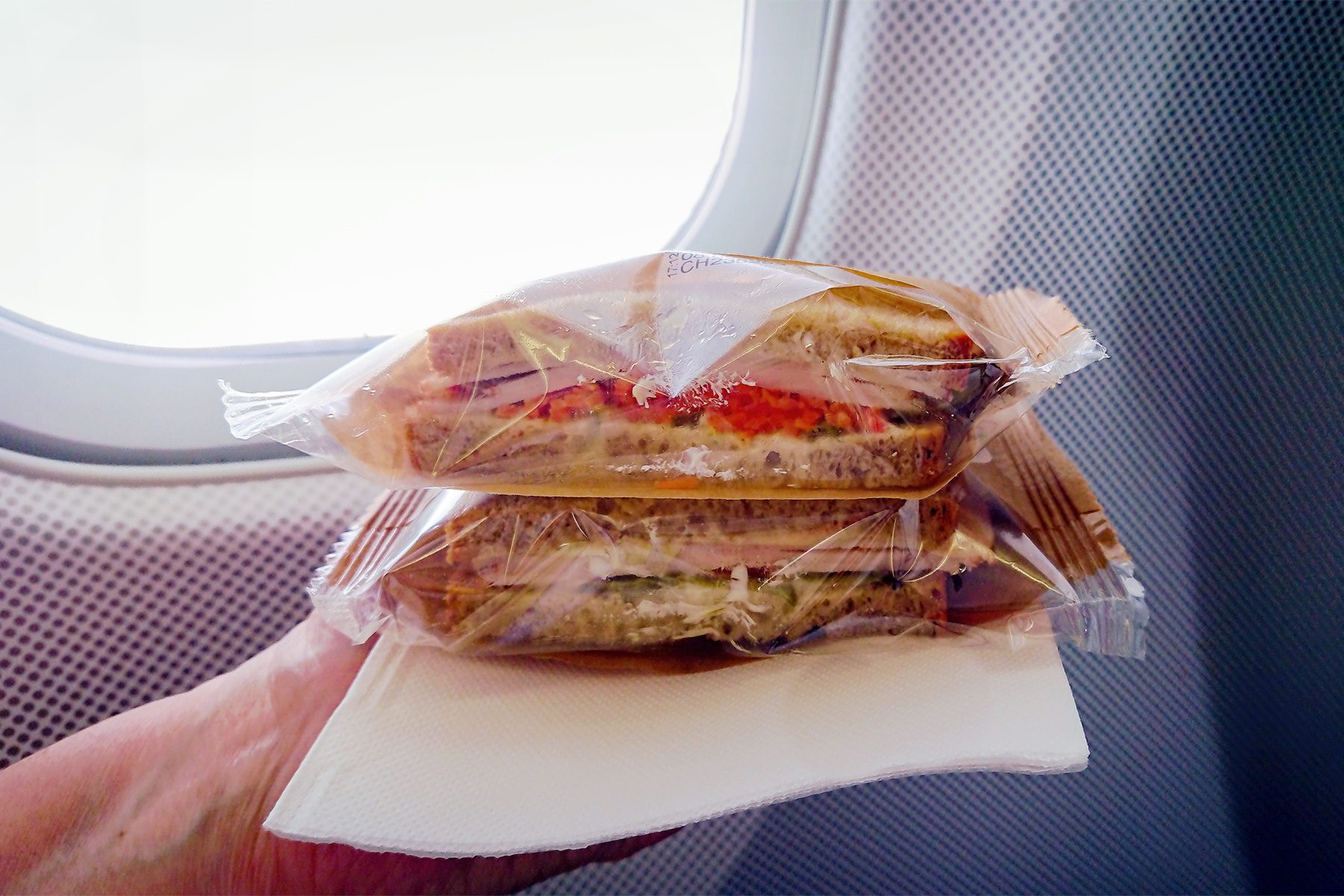
Can You Bring Food on a Plane? TSA Rules You Need to Know


Can you bring food through the TSA checkpoint?
“A lot of people think you can’t bring outside food into the airport, but you definitely can,” says TikTok creator Caleb Harmon-Marshall, who spent eight years working as a TSA agent in Miami and Atlanta and now serves as a flight-rights advocate. “I do it all the time. You don’t want to have to pay for all that food beyond TSA, especially if you’re traveling with a family.”
The thing is, you can’t bring all food through the security checkpoint. It depends on if a food is classified as a solid or liquid … which, as we noted earlier, isn’t as straightforward as it may seem. Can you bring food like a sandwich on a plane? Yes. Cheese? That depends. What about PB&J? Yes, if it’s combined onto a sandwich, but as for the individual ingredients, probably not. Confused? We understand, and we’ll go into the specifics below.
One important note: Most of these rules apply only when you’re traveling within the United States (though some states, like Hawaii, have their own rules); international rules may vary. If you’re traveling abroad, you’ll also want to check with customs about declaring any foods you’re bringing back from another country.

Can you bring a sandwich on a plane?
Yes! Feed the family while you fly with homemade sandwiches, because PB&Js are cleared for takeoff. So is ham and cheese, bologna and mustard, a hoagie you buy at the deli, avocado toast and more. If it fits in your bag and has layers of food in between bread, you can bring it through TSA and onto the plane, although your neighbors will probably be thankful if you leave the tuna salad and other fragrant options at home.

Can you bring spreadable foods on a plane?
What if you want to bring peanut butter and jelly with you, or a jar of mayo or mustard, to make your own sandwich while in transit? Not so fast. According to the TSA, creamy dips and spreads, as well as jellies and jams, fall under the “gel” section of the “liquid, gel, aerosol” 3-1-1 rule: 3.4-ounce containers that fit in a single one-quart bag. Or, as the TSA helpfully says: “If you can spill it, spread it, spray it, pump it or pour it,” then check it.
So keep your PB&J in small containers, check it or leave it behind. The same goes for your onion dip, hummus, cream cheese, guacamole and even brie—yup, brie is spreadable, says the TSA. A hunk of cheddar is not, though, so you’d be fine bringing that with you to get your cheese fix.
Note that if you’re flying from one domestic airport to another, it’s a different story: You’re allowed to bring any food you buy in the airport on board to consume–including the spreadable items noted above.
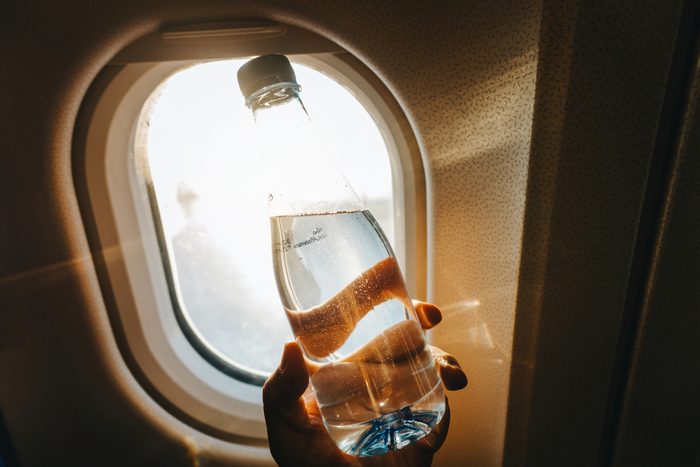
Can you ever bring drinks on a plane?
Any liquids in containers larger than 3.4 ounces will not be allowed through security, which means you can’t bring a super-sized drink from home or outside the airport. But if you have small bottles of 3.4 ounces or less and they fit in your single one-quart bag, you can take them through security with you. Of course, once you’re through security, the world of high-priced airport beverages is at your disposal. Everything from a latte to a smoothie, bottled soda to overpriced water, is OK to bring on board to imbibe (with the exception of alcohol; more on that below).
If you want to avoid spending money at the airport, there is one work-around: freezing your drink. “If you want to bring water or juice that’s over 3.4 ounces, just freeze it,” says Harmon-Marshall. “Now it’s a solid.”
But be mindful of that frozen drink defrosting en route. “If it becomes liquified in any way, TSA will toss it,” Harmon-Marshall adds. That’s because partially melted or slushy drinks won’t meet the 3-1-1 liquid requirements. So perhaps consider a reusable water bottle instead, chug your beverage before you get to security or arrive with it already empty and fill it up after you’ve been cleared.
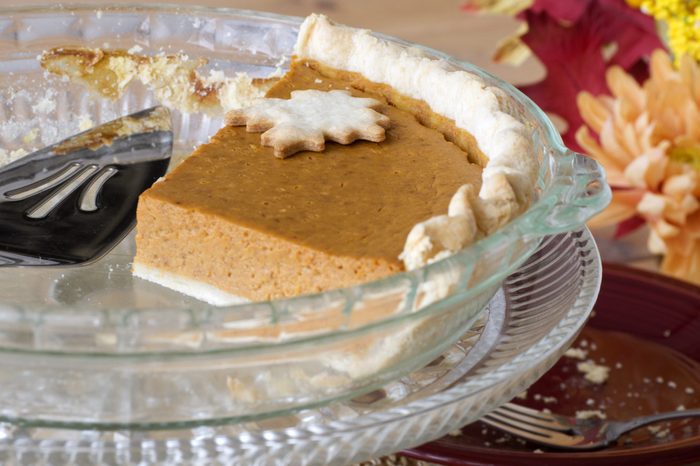
Can you bring holiday food on a plane?
It depends on the food. First, the good news: Pumpkin pies and gingerbread houses are fine to bring, as are cakes, cookies and other baked goods. So are meats (including the holiday ham), fresh fruits and veggies (within the continental United States only) and stuffing. Casseroles are fine to bring too, though probably a little tough to transport. However, runny icing, cranberry sauce, eggnog, canned sugarplums and other canned fruits have to be less than 3.4 ounces or they’ll need to go into checked luggage.
Also, proper packaging will save you a lot of hassles. “Refrain from packaging things in foil,” says Harmon-Marshall. “Try to use transparent containers, because it’s easier for the officer to look and see what’s going on. If you put foil over your food and they have to go into it, they’re going to touch all your food and you’re not going to like it.”
And while you might be your family’s designated Christmas-ham carver, remember that sharp objects won’t make it through security, so it’s best to leave those at home.
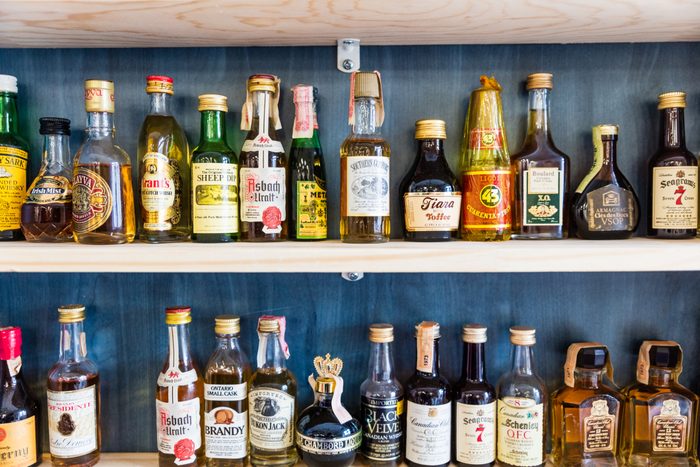
Can you bring alcohol on a plane?
When it comes to food and drinks, just about the only thing you can’t bring on a plane is alcohol over 140-proof. It won’t make it through security in your carry-on or your checked bag. Less potent mini-bottles under 3.4 ounces can be brought through security, and anything larger should be checked.
Alcohol you purchase in the airport, like at a duty-free shop, can be brought on the plane, but it needs to be stored for the duration of the flight and absolutely cannot be consumed in the air. Believe it or not, it’s actually illegal to drink your own alcohol that you bring onto the plane while en route—you can only drink alcohol offered by the flight attendants on board—so keep those minis securely stashed in your carry-on.

Can you bring baby food on a plane?
Thankfully, the TSA makes exceptions to the 3.4-ounce liquid rule for parents of young children. As long as you notify an officer, Harmon-Marshall says you can bring anything you need for your baby—formula, breast milk, baby food, and juice for babies and toddlers—on board in “reasonable quantities,” as long as you’re willing to put them through extra screening.
If you do not want the formula, breast milk and/or juice to be X-rayed or opened, inform the TSA officer. Additional steps will be taken to clear the liquid, and you will undergo additional screening procedures, to include a pat-down and screening of other carry-on property.” This is also one of the few times passengers can get away with going through security with partially melted ice packs.
One caveat: You can only bring baby food on board in these larger quantities if you have a baby with you. If you’re transporting this kind of food to a baby but that baby isn’t with you or if you’re on a soft-food diet, you’re out of luck, and you’ll have to pack the food in your checked luggage.
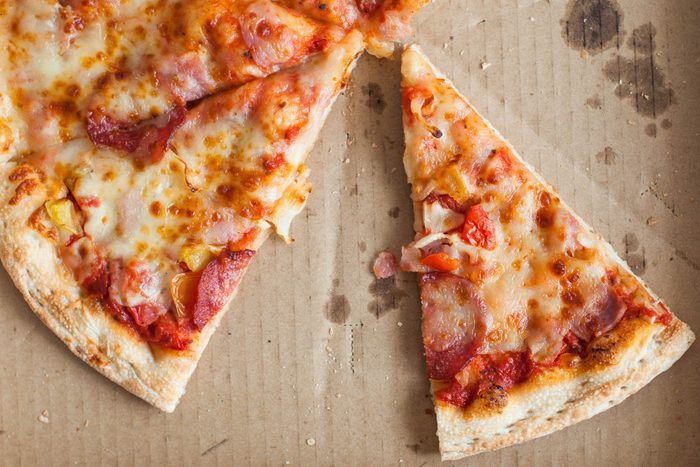
Can you bring a pizza on a plane?
A Domino’s pickup sure is cheaper than any meal options you’ll find in the terminal. Luckily, the TSA gives its official thumbs-up to pizza … though good luck getting a whole pie to fit in your carry-on. You’ll probably want to stack the slices in a smaller container before going through security. Of course, any pizza purchased in the airport is safe to fly with.

Can you put food in your checked luggage?
Yes! Just make sure that it’s securely packaged and stowed so you don’t end up with it all over your other items. If you’re worried that your food will go bad in the heat of your bag and the cargo hold, Harmon-Marshall suggests freezing it and then putting it in your checked luggage. He’s a particular fan of this method when transporting a turkey for Thanksgiving.
And when it comes to other food items, the sky is truly the limit. “My mom lives in Miami, and I live in Atlanta,” he says. “Every time she comes to visit, she has a checked bag full of food.” The TSA allows you to bring dried fruit, fresh eggs (better pack those carefully!), fresh fruits and vegetables, fresh meat and seafood, canned goods and frozen foods in your checked luggage. Go ahead and throw some gel ice packs in to keep everything at the desired temperature in transit. The only thing off-limits is alcoholic beverages with more than 70% alcohol (over 140 proof), including grain alcohol and 151-proof rum.
Additional reporting by Jill Schildhouse.
About the expert
|
Why trust us
Reader’s Digest has published hundreds of travel stories that help readers explore the world safely, easily and affordably. We regularly cover topics such as the best places to visit (and the best times to visit them), tips and tricks to zoom through airport security, flight-attendant secrets, hotel-room hacks and more. We’re committed to producing high-quality content by writers with expertise and experience in their field in consultation with relevant, qualified experts. We rely on reputable primary sources, including government and professional organizations and academic institutions as well as our writers’ personal experiences where appropriate. For this story on the foods you can bring on a plane, Melissa Klurman tapped her longtime experience as a travel writer and an avid traveler. We verify all facts and data, back them with credible sourcing and revisit them over time to ensure they remain accurate and up to date. Read more about our team, our contributors and our editorial policies.
Sources:
- Caleb Harmon-Marshall, TikTok creator, flight-rights advocate and former TSA agent; phone interview, Oct. 29, 2024
- TSA: “What Can I Bring?”
- TSA: “Traveling with Children”





















